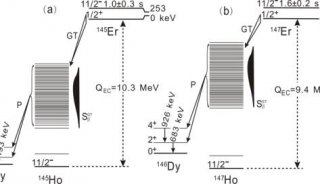ER–associated degradation (ERAD) Pathway

The endoplasmic reticulum (ER) of the cell operates a quality control system that identifies misfolded proteins, transports them into the cytoplasm and then targets them for degradation by the proteasome. Aberrant protein degradation is the mechanism underlying many diseases, including cystic fibrosis and heritable forms of lung and liver disease. The pathways that orchestrate the destruction of aberrant proteins are collectively termed ER–associated degradation (ERAD). Most of the proteins synthesized in the ER are cotranslationally modified with N (asparagine)-linked glycans by addition of triglucosylated, branched oligosaccharides at asparagines residues. Rapid glucose trimming by ER glucosidases generates monoglucosylated N-glycans (Glc0-3Man9GlcNAc2). Productive folding of the polypeptides to which the glycans are attached requires the services of an ER lectin chaperone called calnexin (CNX) that recognize the Glc1Man9GlcNAc2 oligosaccharide and assist the folding of newly synthesized glycoproteins. Beause the half-time of monoglucose in the nascent glycoproteins is about 2 min, the protein should be repeatedly reglycosylated by UDPglucose: glycoprotein glucosyltransferase (UUGT) resulting in association with CNX. Next, the mannose residue from the middle branch of the Man9GlcNAc2 oligosaccharide is removed by ER -mannosidase I, then correctly folded glycoproteins bearing Man8GlcNAc2 isomer B (Man8B form) are transported out of the ER to the Golgi apparatus. If the native structure of the glycoprotein cannot be achieved it is retained in the ER. When substrates are released from CNX by glucosidase II, they may be transferred to one of 2 pathways: EDEM for degradation or UUGT for reentry into CNX cycle. A glycoprotein with permanent structural defects is modified by the slow-acting enzyme ER mannosidase I. This enzyme attaches Man8 glycans to misfolded glycoproteins and in so doing generates a signal that results in ER-associated glycoprotein degradation (GERAD). A glycoprotein with a glycan in the form Glc0-3Man8GlcNAc2 is released from the calnexin cycle, recognised by a mannosidase- like protein EDEM and dislocated from the ER to the cytosol.. Here the protein binds to the glycan-specific F box protein Fbx2 and is targeted to the SCF-Fbx2-type E3 ubiquitin ligase complex. This results in the protein being polyubiquitinated. The protein is subsequently deglycosylated by a cytosolic peptide N-glycanase (PNGase) that is closely associated with the ubiquitin ligase complex and/or the 19S lid of the proteasome. Finally, the ubiquitinated, deglycosylated protein is degraded by the proteasome.
Contributor: A. Konev, PhD
REFERENCES: Lord JM, Frigerio L. ER quality control: a function for sugars in the cytosol. Curr Biol. 2002;12(19):R663-5. Molinari M et al. Role of EDEM in the release of misfolded glycoproteins from the calnexin cycle. Science. 2003; 299(5611):1397-400. Oda Y et al. EDEM as an acceptor of terminally misfolded glycoproteins released from calnexin. Science. 2003; 299(5611):1394-7. Sifers RN. Protein degradation unlocked. Science, 2003;299(5611):1330-1
-
科技前沿









